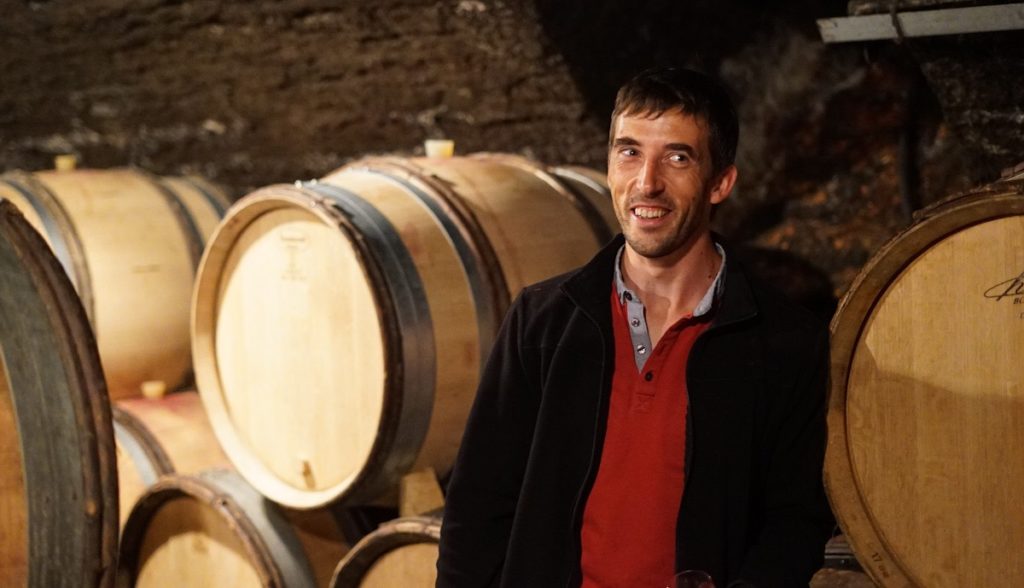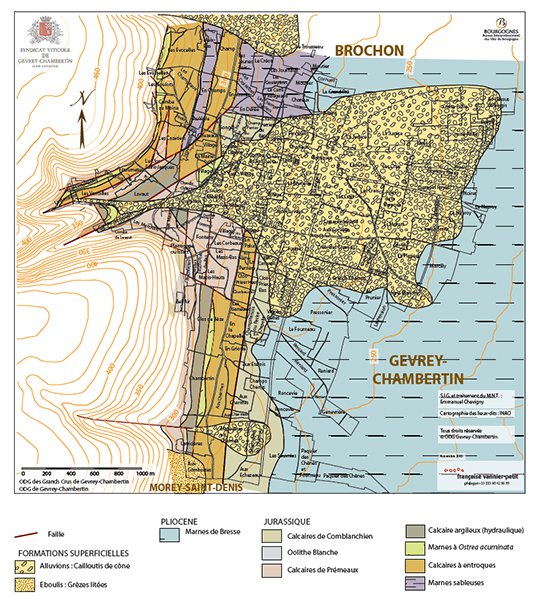Gevrey-Chambertin Lavaut Saint-Jacques is, as many readers know, a large and quite fragmented vineyard located on the edge of the valley located just above and to the west of the village of Gevrey.

The valley is called Combe Lavaut, and much of Gevrey’s northern geological structure was created by the alluvial fan which emerges from it,
There are a number of prominent owners of Lavaut, including Dugat-Py, Claude Dugat and Armand Rousseau. But rising stars like Pierre Duroché have also been able to show their chops with the interesting mineral profile of this fine 1er cru.
The Lavaut – or Lavaux – is perhaps not the most precise or expressive of the Gevrey vineyards. But in my book, it has a certain hedonistic quality that makes it worth seeking out.
Pierre Duroché has a number of plots totalling a bit more than 1.2 hectares and therefore makes two Lavauts: one blending seven different plots, and the top wine which comes from vines in one of those parcels that were planted in 1923.
Let’s take a closer look at the Lavauts from Pierre Duroché.
Lavaut: complex geology
The geology of Lavaut Saint-Jacques is quite complex, as it is located just at the exit of the dramatic and rocky Combe Lavaut.
The Combe has a huge alluvial fan that has spread sediment throughout the whole northern part of Gevrey-Chambertin (see the geological map below).
As the fan is rather narrow in the Lavaut area, there are some rather dramatic shifts in the geology within the vineyard.

The video below contains a fine explanation of Gevrey’s geology that will explain more than I can glean from the maps alone.
The Duroché plots in Lavaut Gevrey-Chambertin
As said, Pierre Duroché has seven cadastre plots in Lavaut Chambertin – in total 1.2 ha (see map below).
You need to login as a premium subscriber to read the rest of this article. If you are not a subscriber, use the subscribe function and sign-up.

 - A true vin d’émotion – a Burgundy of passion
- A true vin d’émotion – a Burgundy of passion - A truly hedonistic wine – lively and enjoyable
- A truly hedonistic wine – lively and enjoyable - A vivacious wine for pure indulgance
- A vivacious wine for pure indulgance - A potential vin d´émotion - frais et léger
- A potential vin d´émotion - frais et léger
Leave a Reply
You must be logged in to post a comment.